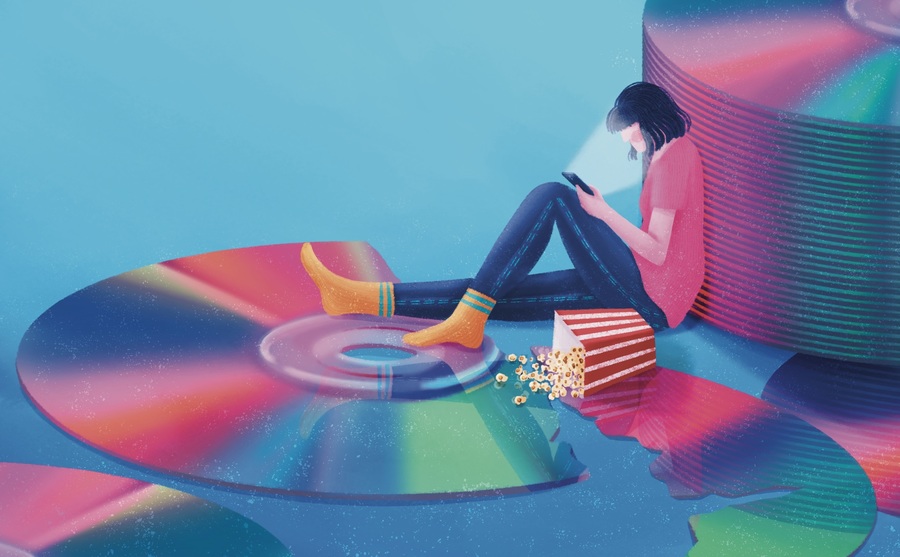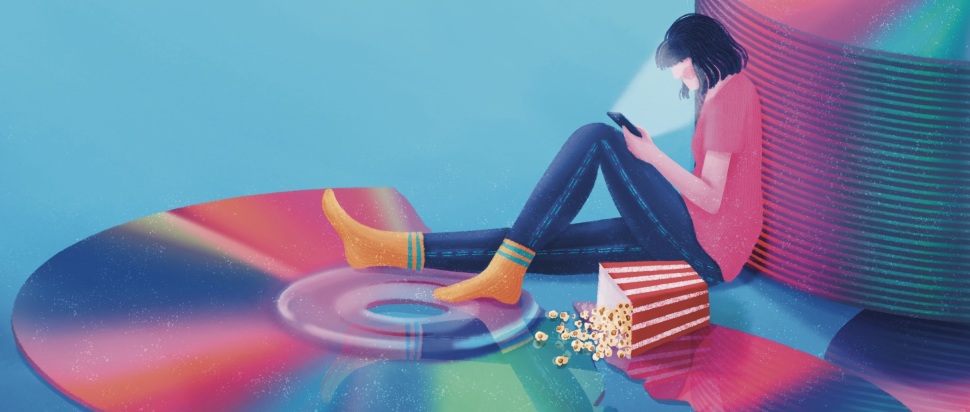The sins of streamers and the lost treasures of DVDs
As DVDs turn 30 this year, we lament their scarceness in 2025’s hostile streaming environment and the rich possibilities they held
We’ve lost the value of ceremony in so many domains of modern life. From expedient food delivery to delegating email composition to robots, we have streamlined too close to the sun. And in the film and TV landscape, this feels especially pronounced, as streaming has totally compromised something once very material and sacred: DVDs, the once ubiquitous consumer video format invented in Japan in 1995.
The issue is that the jam-packed interface of modern streaming services – with Netflix being the standard-bearer, having mutated from their original DVD rental mailing service system – proves overstimulating and stunting for the viewer. Disoriented by its topographical nightmare (that has been perverted even further in Netflix's case with the recent, baffling addition of a mobile gaming tab), we experience decision paralysis. Facing off with five thousand titles, the malignant Rolodex system steals entire hours of time while sanding down our conscious engagement. Addled and worn down to passive scrolling, it begets atrophied hands and indifferent minds. Brain cells are rendered hors de combat.
Comparatively, the DVD once gave movie night dignity and clear parameters. I reminisce about the easy process of elimination at a sleepover as a tween, from a maximum of four DVD options laid out in a single solitaire-like column.
I've felt the novel buzz of digital wanderlust maybe once in 2014 but since then it's been pure numbing. This is the fallout of the lost ceremony of DVD shopping or renting; a whole weekend could pivot on such an acquisition. I nostalgically recall The Sopranos' Christopher Moltisanti, a thwarted filmmaker himself, asserting, “I love movies. That smell in Blockbuster, that candy and carpet smell. I get high off it.” That the soul-draining digital scroll offers no such multi-sensory trip reveals streaming’s most sinister consequence: you cannot build memories from it. Convenience arrives at the death of meaning, as easy access precludes intention.
As a kid, the absorbing browse of the supermarket DVD gallery involved the following: studying the blurbs (the truncated review quotes, the fine print at the bottom, and doing the juvenile mental arithmetic exercise of converting run times from minutes into hours); getting to know actors' faces (Eugene Levy gradually became something of a second father); and apprehensively rubbernecking at the explicit (the cover of Bad Santa is perennially burned in my mind – it may as well have been a snuff film for all the alarm the lascivious, divorced da grin of Billy Bob Thornton stirred in my ten-year-old self). Of course, the social contract between a wandering child and the figurative lasso of the supermarket tannoy was eventually enforced after having disappeared for half an hour. Finally summoned to the customer service muster point, I was quietly empowered by new creative insight.
We are living through a loveless age and DVDs exist on an axis of love, much like the snug VHS before them. A lodestone for family, friends and lovers, DVDs were a tangible vehicle for real intimacy (I've always considered ‘Netflix and chill’ a psy-op). They conjure a vector of ownership: becoming part of a home’s furniture, a thoughtful gift, something you have to actively maintain – remember the pantomime home remedy of hot-breath-and-wipe when disc scratches interrupted play? That the DVD could be damaged alerted you to its preciousness, its life. The threat of losing the story was a grave personal thing. Contrast this to Netflix’s regular jettisoning of film titles. Do you ever fondly remember a movie’s listing, later eagerly search it, and discover it has since been removed? Such non-consensual excisions are constant. Your illusory personalised profile icon gestures control, but the suits and server rooms are the real occupiers.
A ramification of streaming is that, en masse, we have been socialised out of spending meaningful time submerged in a story: the average young person now admits to having such a short attention span they cannot watch a full movie without regular phone checks; any film longer than 90 minutes is decried. Recall the prelapsarian days of DVD menu screens inviting us to dig even deeper, to watch trailers, bloopers, deleted scenes and featurettes of cast and crew commentaries (enjoy one hall of famer: Ben Affleck’s damning narration of Armageddon in which he savagely decoupled the plot from any logical sense). At the beginning of many American films you’ll see Metro Goldwyn Mayer’s trademarked logo in Latin: 'ars gratia artis,' which means 'art for art’s sake.' Before the streaming setup, we used to have a wellspring of meaningful extra trimmings created just for the sake of it, for the love of the game.

Illustration by Kasia Kozakiewicz.
Consider the charm of each such aspect: the menu screen acted as a portal, a maitre d’ of sorts, a stained glass vestibule with colours and light so vivid you could sit in its glow for some time before crossing beyond. I recall the compelling primer to the DVD for Pedro Almodóvar’s 2006 melodrama Volver, specifically experienced on Saturday mornings in childhood. As my mum finished hoovering, its jingle – a sonorous flamenco thrum ('Volveeeeer') – played on loop over the intriguingly severe expression of its star, Penelope Cruz. Also notable was Shrek 2’s DVD menu, which had its character ensemble configured like Andy Warhol's Marilyn Diptych while exchanging meta banter.
Then, of course, the slate of trailers that played before the film start sensitively worked to recreate the paced conditions of the in-cinema viewing experience, and as time lapsed, served as a sweet time capsule forever tied to the epoch of the film’s release (that might've meant over-distinguishing the most mediocre comedy of 2007, but so be it). And you can’t forget the gritty, cautionary anti-piracy PSA, the iron-fisted moralising that freaked out a whole generation.
On offer, too, were the bloopers in which scene partners were captured in a well-disposed flow of guffaws and line fuck-ups – mistakes that demonstrated their humanity. In science schooling, you are taught to 'show all of your working' – these were such purposeful roadmaps to comedy solutions. Equally, the deleted scenes, the giblets to the movie’s Christmas turkey, gifted offbeat shavings and alternative endings that allowed the audience to understand the director’s broader schema and editing instincts.
Finally, there were the inexplicable extra vignettes of the filmic cosmos, fecund narrative tangents rendered for the thrill of it, like The Dark Knight’s generous, worldbuilding roster of Gotham Tonight news interviews or the musical short Shrek in the Swamp Karaoke Dance Party.
But not only does the defanged streaming interface deprive us of these extra bursts of movie passion, we barely get to experience the film itself in its full primary form. Another poisoned arrow in Netflix’s quiver is the brusque, violent autoplay, which ensures you barely get to read the director’s name, let alone the full credit roll, once the film finishes before being launched into a new show or movie. It’s forced eviction rather than good-faith transition; a framework of pure evanescence, posing as expansive. MUBI and The Criterion Channel are the rare streamers with integrity, dissolving the borders of world cinema and not actively hijacking the audience’s experience of the art. HMV, with its busy shelves of physical media, is also fighting the good fight, if at slightly inflated prices (the Blu-ray of Madame Web for £20, anyone?).
But the unceremonious cuts and library extractions crystallise a fatal company contempt for both the consumer and the craft. Everyman cinema offers the velvet sofa; Vue, the leather recliner; and Netflix, the military-grade ejector seat. Viva la DVD.
